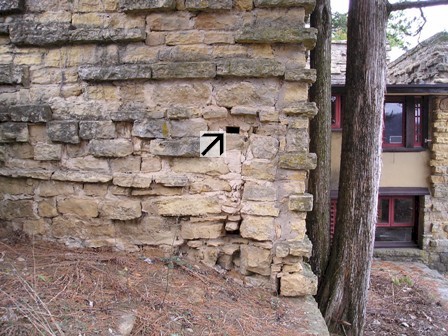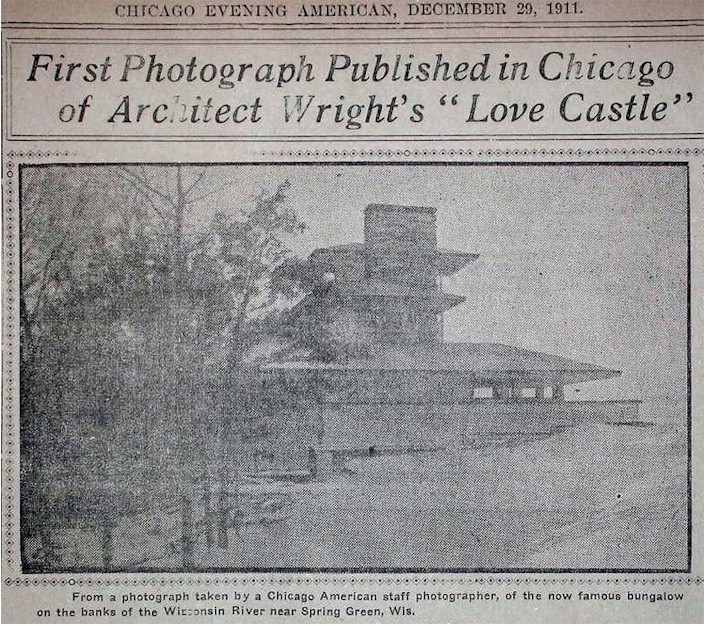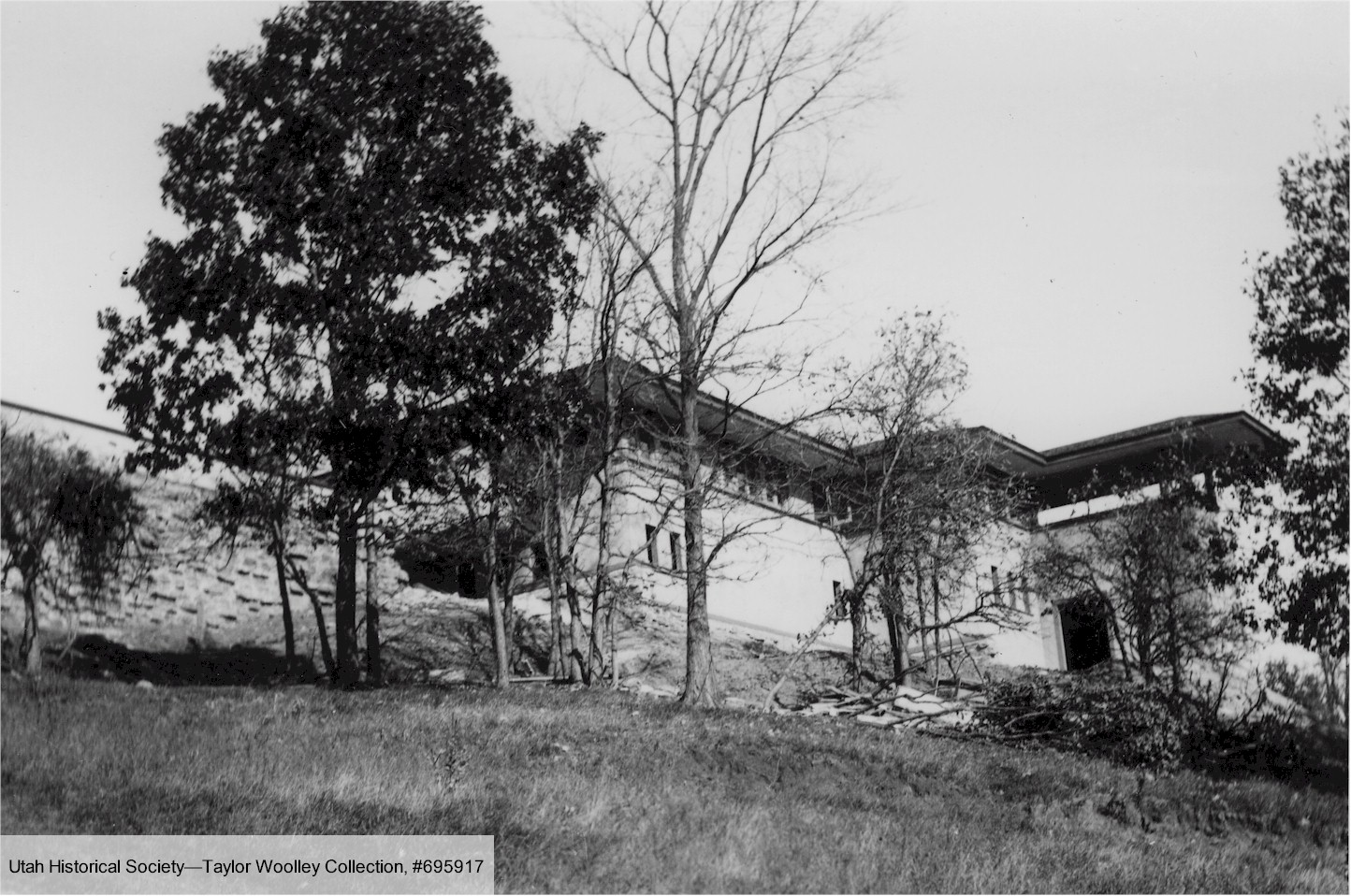The logo for NaNoWriMo
Here’s the start:
Over 15 years ago, I read the book, The Girl With the Botticelli Eyes and was furious. I wasn’t mad about the novel’s plot; I was angry because I felt the author completely misunderstood art restoration.
The Girl With the Botticelli Eyes takes place around an exhibition on early Renaissance painter, Sandro Botticelli (the man who painted The Birth of Venus, a.k.a., “Venus on the half-shell”). Among other things, a violent Italian fascist mutilates two Botticelli paintings… and puts the “Girl” of the book’s title into a dangerous position. I don’t remember the rest of the novel: I just remember how pissed off I was.
Why so mad, Keiran?
That’s because—after the crazed Fascist slashed through the eyes on a painting (or two), and left the piece barely intact—the curator gives the painting to some genius restorer who does magnificent work in, like, 2 days. In time for the exhibition opening.
While there are world experts in art restoration in NYC, there’s no way in hell that someone could restore a painting—executed in Italy in the late 1400s—in two f***ing days. I knew that and I didn’t even know the particulars about restoration experts of Renaissance painting.
So
As you can see by my continued annoyance
I wrote a couple of pages on a novel with a Taliesin house steward as the main character to show people what someone who knows the damned details about an artwork could do. But then got lost and did nothing more.
Until 2005
That’s the year that I wrote my first novel during NaNoWriMo, which is the subject of my post today.
What’s NaNoWriMo?
It takes place every November and stands for:
NAtional
NOvel
WRIting
MOnth
Some friends started it in 1999 after giving each other a challenge: write a 50,000 word novel in November from scratch.
In the lead up to November 1, you can do character development, plotting, planning etc., but you CANNOT write anything on the novel until 12:00 a.m., November 1.* And you must SUBMIT your 50,000-word novel by 11:59 p.m., November 30.
* I wrote earlier that you couldn’t start writing until 12:01 a.m. I’ve got no idea where I got that mistake came from. Well, yes, aside from coming from my own brain.
Do you win anything?
You win a link to a certificate that you can print. The certificate says you WROTE A 50,000 WORD NOVEL IN A MONTH.
What’s all?
Yup: that’s all.
No, really: don’t you get anything? Doesn’t anyone look at your novel?
The majority of people who look at the novel will be those who wrote it, and/or those who know the NaNoWriMo novelist.
Why the hell would you do this?
The folks who came up with Nanowrimo have dealt with these questions longer than me, so read their FAQ page from the Wayback Machine.
But,
Aside from knowing that you WROTE A NOVEL, there are people who participated in NaNoWriMo and took their 50k-words-(or more)-novel, and edited it, expanded it, found an agent and had it published. Novels written initially during Nanowrimo include:
- Fangirl, by Rainbow Rowell
- The Night Circus, by Erin Morgenstern and
- Like Water For Elephants, by Sara Gruen.
Check out this web page mentioning some novels started at NaNoWriMo:
8 Bestselling Books Written During NaNoWriMo
Here’s my experience (experiences):
In October 2005, a friend online mentioned signing up for Nanowrimo. I’d heard about it, and among all of my “no I can’t do that,” this popped into my head:
Hey – why the hell couldn’t I do that? After all, I’d spent a week PO-‘d about The Girl With the Botticelli Eyes because “The writer wasn’t qualified to write what he did!!!”
Even in 2005 I knew I was an expert on Taliesin. And I knew my typing wasn’t bad.
so I could type like the wind!
And, oh yeah: there was my college degree. In writing.1
So: I wrote my first Nanowrimo novel.
Or, as I called it:
“The Book About a Murder at Taliesin… But Not That Murder“
Lisa is the novel’s narrator. She’s a tour guide who works at Frank Lloyd Wright’s Taliesin, and lives in Spring Green Wisconsin. She isn’t me… exactly. She’s shorter and has blond hair. I think she was a little younger than me when I first started this in 2005. And she went to Graduate School in Art History, but never got her degree.
She does smoke and drink too much. I probably did when I first wrote it, but not as much as Lisa did.
But that wasn’t really my fault:
NaNoWriMo means you have to write 1,667 words per day. Writing about lighting up cigarettes gives you a chance to change the character’s location. And drinking gives you a place to hang out with other characters. And just having a character look at their cigarette pack and realize they’re getting low, adds to your total word count.
I mean, look:
I checked my cigarette supply. I was down to half a pack. I thought, “Oh, man,… I’ll have to stop soon.” But I figured I would deal with it later.
That’s 30 words right there!
Regardless, I did finish the novel. My word count was over 70,000.
I named the novel Death by Design
An online friend suggested it after I asked for input.
Why was Death by Design a murder novel?
It was the easiest thing for me to think up. Murder mysteries (as I learned) are easy… in ways. Particularly when you are attempting to write 1,667 words per day for 30 days straight.
Because 50,000 divided by 30=1,666.6666666667
I found that murder mysteries are easy because you (the author) figure out the clues and you can dab them in throughout the text, only to have them solved in the exciting denouement. Plus, I’d already spent years listening to murder mysteries on Old Time Radio Drama.
Death by Design‘s plot:
Main character, Lisa, is opening up the Hillside buildings one morning2 in May 2000.3 She walks into the Hillside Theater and finds the body of a man who’s been murdered.
Hilarity ensues since she has to call the programs director (at that time, a former guide who ran all the programs), while keeping the Taliesin Estate Tour guide with her group from accessing the Theater.
Over the following days, Lisa tries to deal with everything. Along with drinking too much (just beer, I swear). Additionally, she befriends a member of Taliesin’s Preservation Crew who she’s known for years. They end up dating by the end of the novel.
ALONG THE WAY:
Aside from every theory and every thought about Taliesin that came to mind, the book gave me a chance to write details about every fricking thing in the local area. I wrote in the novel information about the local bar, The Shed (sadly, closed this year) and the Spring Green General Store cafe. I took the opportunity to mention a yearly tradition at the General Store: BobFest.
And I invented a few obnoxious apprentices at the Frank Lloyd Wright School of Architecture.4 That gave me a chance to write about the Taliesin Fellowship and its history. I then poisoned all of them with arsenic at dinner one night.
I pulled out “arsenic” after reading advice from another “Nanowrimer”: death and violence is a good way to switch up the story. Plus, by this time my book already had one murder. Maybe two.
UNTIL, finally, Lisa (and the love interest/Pres Crew guy, Jake5) get invited to a Taliesin formal dinner, in which the murderer tries to set fire to Taliesin.
Yes, I know: that old chestnut.
The murderer is caught of course. Lisa and Jake are together at the end. Lisa has started on a nicotine patch to quit smoking, and a new tour has been created based on the murderer trying to set fire to Taliesin.
Apparently, like the book Loving Frank, publicity about the murder in the Hillside Theater Foyer increases sales for tours that go to Hillside!
I participated in NaNoWriMo several more times:
2006:
The plot of the novel starts with Jake and Lisa as newlyweds. They’re on their honeymoon, which consists of going to other Frank Lloyd Wright sites.
as one does
I was also inspired in this novel by the destruction of two historic buildings in 2006. One was a destructive fire at a church by architects Dankmar Adler & Louis Sullivan in Chicago. Later that same month (January), a newly rediscovered house by Wright, the Wynant House, in Gary, Indiana was pretty much destroyed. Also by fire. So, the bad fortunes of these two pieces of architecture were put into the novel.
In addition,
Lisa later defends herself (I think) with a heavy reproduction of a Frank-Lloyd-Wright-designed “Weedholder” vase. This particular moment of brutality comes at the Wright-designed Darwin D. Martin House in Buffalo, New York. I remember something else with furniture by Steelcase being used as a weapon at Frank Lloyd Wright’s Meyer May house, Grand Rapids, Michigan. And, lastly, Lisa finds the drowned body of a professor in Architectural History in the guest pool at Fallingwater.6 And she finds the Executive Director of Fallingwater after the E.D.’s been suffocated. She’d had Johnson’s paste Wax stuck into her nose and mouth.
Don’t worry if this makes no sense. I don’t expect anyone to know this unless they, like me, are Frankophiles.
2007:
That was a sci-fi novel where my character lived on a satellite of a gas giant. I never made it past 15,000 words. I had fun with it, but didn’t “Win”. The main character got stranded somewhere and I couldn’t figure out how to move the story on.
2009:
That October, I asked others what I should write for the upcoming NaNoWriMo. A friend suggested I write, “Frank Lloyd Wright in space!“
Predictably,
I just relied on the trope of the Time Travel Police. That is, some police-like force exists to keep the “timelines” clear. In my book, the MC gets picked up by the Time Travel Police whose job it is to find clones that cultural geeks have made of their idols so they can remove the clones from timelines that they could mess up. The MC is brought to a clone of Frank Lloyd Wright living on a spaceship filled with other anachronistic clones.
Like Jane Austin. And Leonardo Da Vinci.
So you can see, that there was a reason why I felt I have done what I could with NaNoWriMo.
Now, remember:
If you’re interested in the idea, November starts in a few days. Go to the site. You can read about the rules (or not), and the organization, in “Help Desk” on the NaNoWriMo page. And you can just sign up, and you can check on your word count as you go.
If you get through it, if nothing else at least you can say that for once in your life, you wrote a novel. You’ve got a month to write it, and all the time you need afterwards to edit it.
October 28, 2022
The image at the top of this is the logo for NaNoWriMo.
Notes:
1 I didn’t figure out the Art History interest until I was a junior in college.
2 Regardless of whether of not apprentices/students were at Hillside, tour guides used to open the Hillside structures in the morning, and shut the building down at the end of the day.
3 I chose to set the novel in the year 2000 because this eliminates any discussion of 9/11/2001.
4 One of the apprentices, who is a big, lying jerk, isn’t based on anybody I know or knew.
5 For those who know me IRL, Jake started out based on a real person. But I got grossed out when I realized the main character and Jake would have a romantic relationship. So, I changed most things about him.
6 The murdered Architectural Historian was real. But, that’s ok: he passed away years ago.



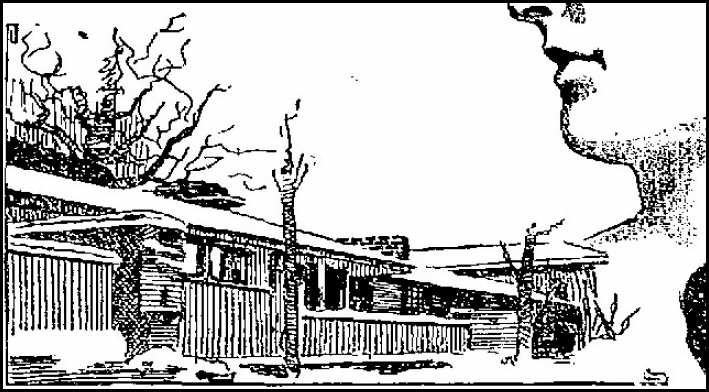
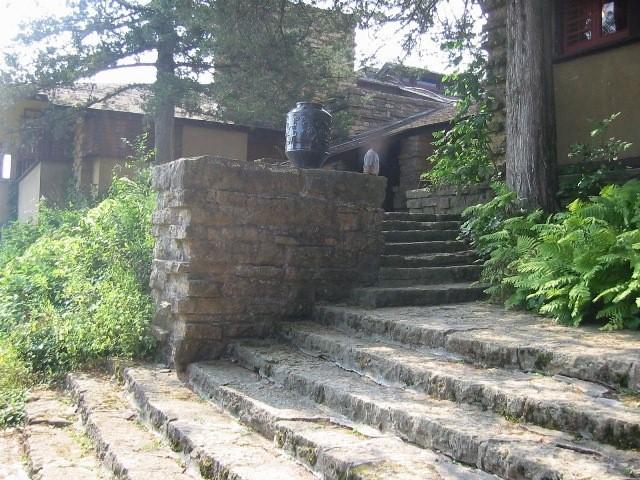 You walk up the steps at Taliesin to Wright’s studio at Taliesin (the north wall of the studio is to the right). The parapet from the Taliesin I photo ended at the stone that is to the left of the tree trunk (the tree trunk is to the left of the window that’s on the extreme right in the photograph) .
You walk up the steps at Taliesin to Wright’s studio at Taliesin (the north wall of the studio is to the right). The parapet from the Taliesin I photo ended at the stone that is to the left of the tree trunk (the tree trunk is to the left of the window that’s on the extreme right in the photograph) .